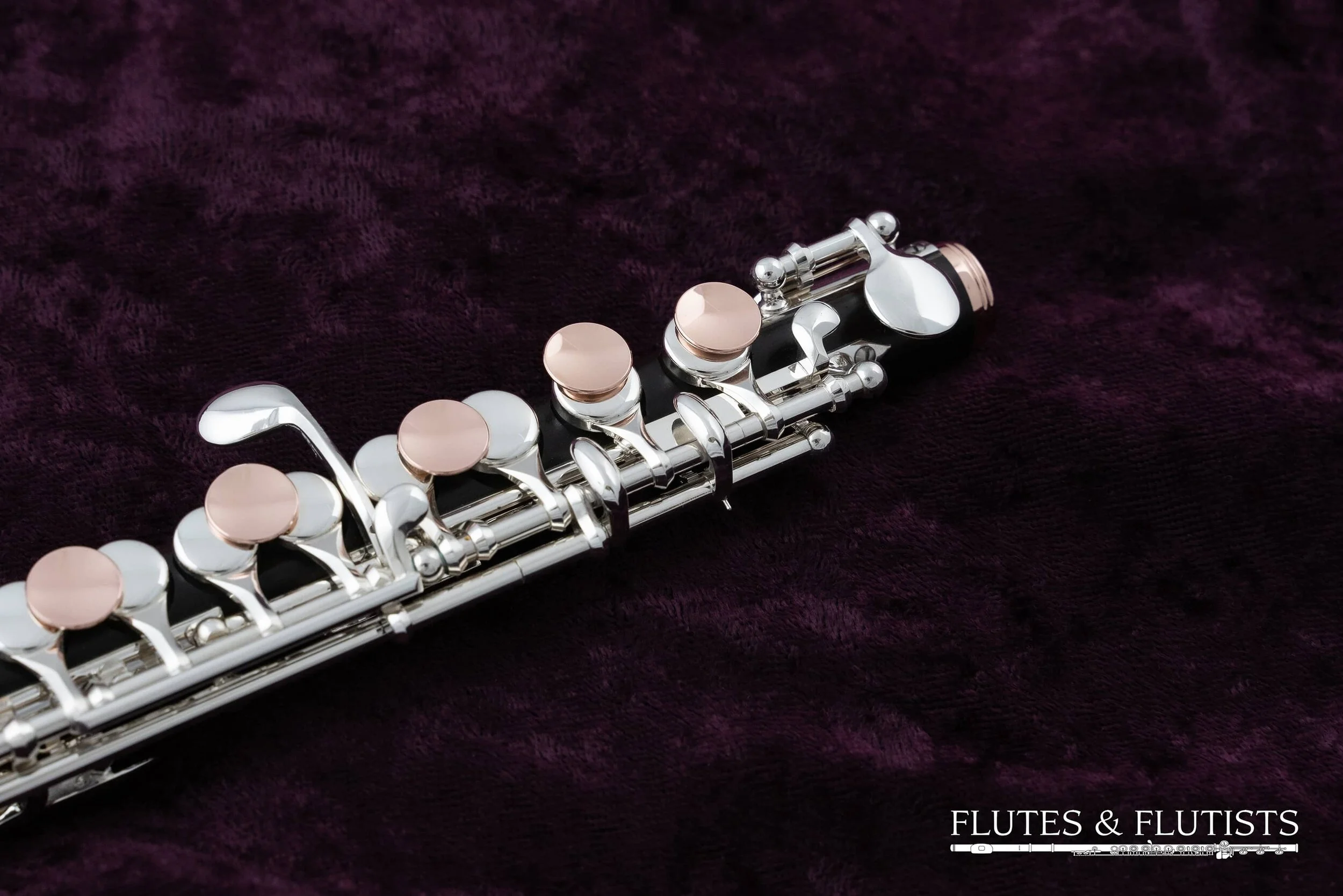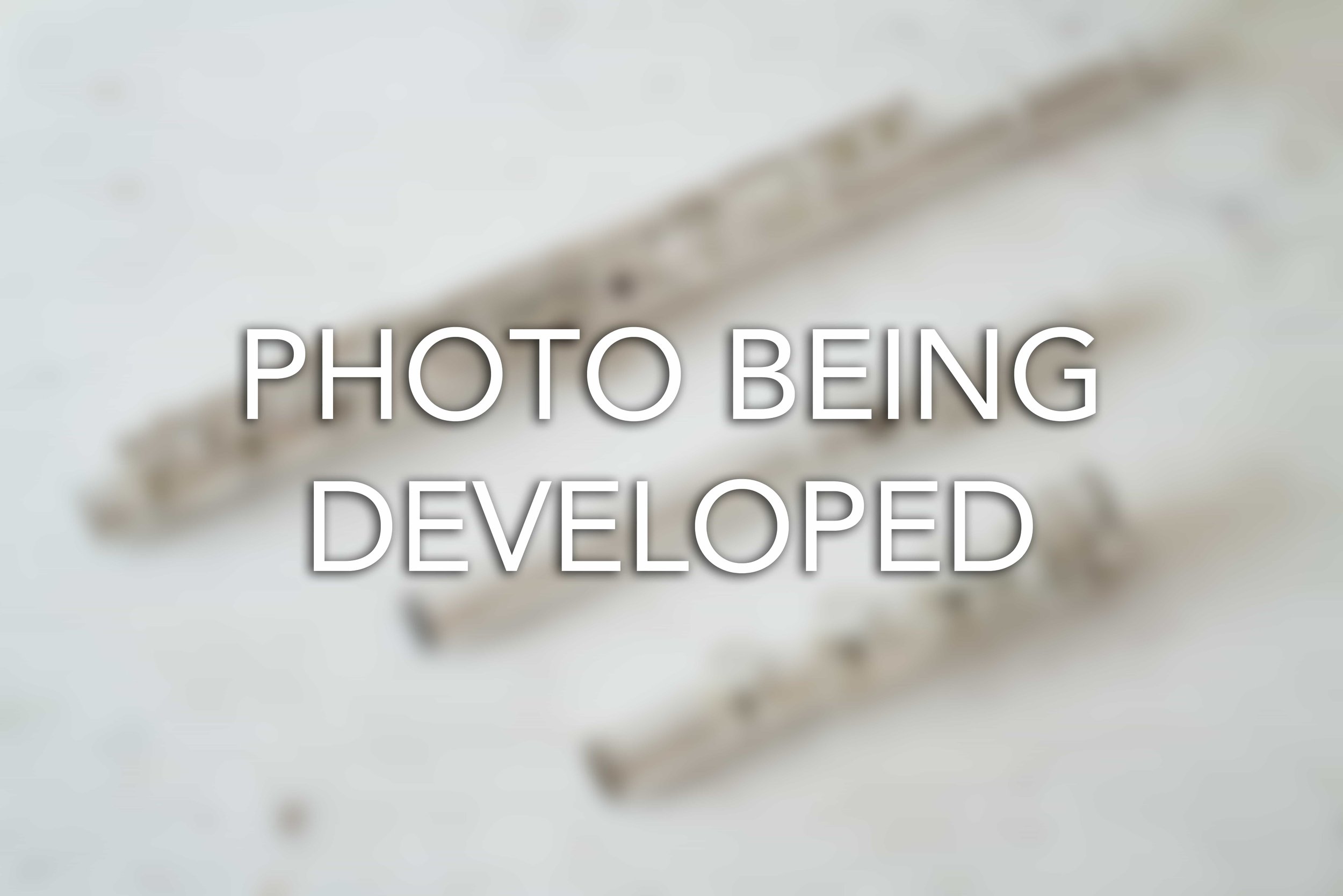 Image 1 of 8
Image 1 of 8

 Image 2 of 8
Image 2 of 8

 Image 3 of 8
Image 3 of 8

 Image 4 of 8
Image 4 of 8

 Image 5 of 8
Image 5 of 8

 Image 6 of 8
Image 6 of 8

 Image 7 of 8
Image 7 of 8

 Image 8 of 8
Image 8 of 8









KEEFE Custom Handmade Piccolo | Gold
Contact us to find out when we are expecting to receive the next piccolo from KEEFE.
Completely Handmade to Order
Highest Grade Grenadilla Wood Headjoint & Body
Sterling Silver Mechanism
14K Gold Tenon, Rings, Finger Buttons & Fittings on Headjoint
“Modern” Headjoint Style
Split-E Mechanism
Brossa F# Key
Vented C Key
Each Keefe piccolo comes with a hard case, soft carry cover, cleaning rod, inside cleaning cloth and outside cleaning cloth.
Contact us to find out when we are expecting to receive the next piccolo from KEEFE.
Completely Handmade to Order
Highest Grade Grenadilla Wood Headjoint & Body
Sterling Silver Mechanism
14K Gold Tenon, Rings, Finger Buttons & Fittings on Headjoint
“Modern” Headjoint Style
Split-E Mechanism
Brossa F# Key
Vented C Key
Each Keefe piccolo comes with a hard case, soft carry cover, cleaning rod, inside cleaning cloth and outside cleaning cloth.
Contact us to find out when we are expecting to receive the next piccolo from KEEFE.
Completely Handmade to Order
Highest Grade Grenadilla Wood Headjoint & Body
Sterling Silver Mechanism
14K Gold Tenon, Rings, Finger Buttons & Fittings on Headjoint
“Modern” Headjoint Style
Split-E Mechanism
Brossa F# Key
Vented C Key
Each Keefe piccolo comes with a hard case, soft carry cover, cleaning rod, inside cleaning cloth and outside cleaning cloth.
JAMES KEEFE began his piccolo-making career with Brannen Brothers in 1978, eventually rising to the position of Vice President and General Manager. His record of superior craftsmanship, his innovations in head joint and mechanism design, and his dedication to meeting the needs of piccolo players, have established Jim as one of the finest piccolo makers in the world. Jim earned his Bachelor of Music degree at the University of Illinois where he studied with Eric Hoover. He also pursued graduate studies at Boston Conservatory.
His piccolos are in such high demand that the waiting list is now up to three years if ordered directly from him. As one of the few dealers in the world to stock KEEFE piccolos, we help you eliminate this waiting time by having a standing order every year.
– For the Piccolo Specialist and for those who need to sound like one –
Headjoint Style – “MODERN”
The sharper blowing edge provides a quicker response and a dark sound.
BROSSA F# KEY
The Brossa F# key is a small key to the right of the D key. It is operated by the 3rd finger of the right hand and allows the player to close the F# key without closing the D or E keys.
The principal uses of the Brossa F# include the following:
Middle F#: Using the Brossa F# produces a more stable middle F# which can be helpful with double-tonguing in passages such as the beginning of the Semiramide solo. It is also useful for the sustained F# in the slow movement in the Shostakovich 9th Symphony and in Mahler’s 2nd Symphony, keeping the pitch up and the tone pure.
Playing high F# softly: Fingering F#7 with the Brossa F# (and with the D# key closed) is more responsive for many players. The pitch is also slightly higher which can be helpful in a soft passage.
Trilling middle or low E to F#: The tone quality of the F# is better with the Brossa F# than with the typical forked fingering used for this trill. (Finger E plus right hand 3 on the Brossa F#. Trill right hand 1 and 2.)
Trilling middle or low F/F#: The tone quality of the F is better with the Brossa F# than with the usual forked fingering. (Finger F plus right hand 3 on the Brossa F#. Trill right hand 1.)
Avoiding cross fingerings from middle or low E to F# or F to F#: Mastering cross fingerings is an elementary part of playing the piccolo or flute and the Brossa F# does not eliminate them. However, in an exposed passage, using the Brossa F# to avoid a cross fingering is a useful option.
VENTED C KEY
To make the vented C key, we add a small hole to the centre of the C key (left hand, first finger). It is used by closing the C key but sliding the finger off to one side to vent the small hole. We pad the C key with a cork pad which accepts the small hole very neatly.
The Vented C key is used in the following ways:
Improving the response of middle E: On the piccolo (and flute), when we play middle D or middle D#, we keep the C key open (first finger, left hand).
This open tonehole acts as an octave key and allows the D and D# to speak freely. When we move up to middle E, an octave key would still be helpful since middle E can be easy to crack. However, opening the full C key is too much venting. Venting the C key with a smaller hole is the solution. It makes the E more stable, especially when double tonguing or using accented articulation.
Raising the pitch of top G, F or middle C: Many notes can become flat when playing piano. This is especially challenging for the 3rd octave G because there are few, if any, alternate fingerings to help. Venting the C will raise the pitch by 10 to 15 cents.








